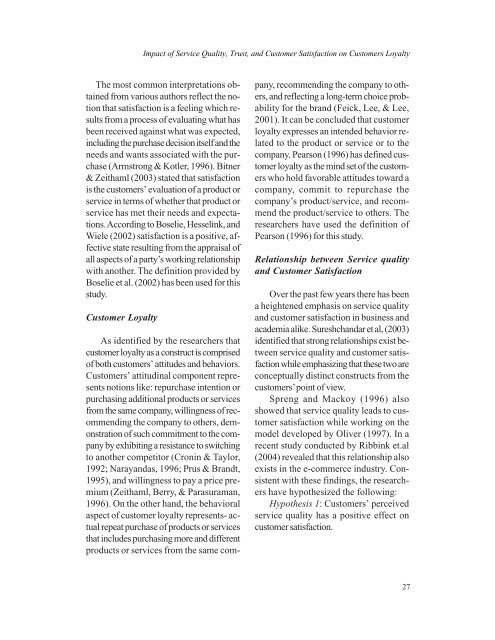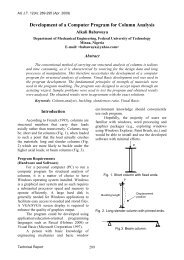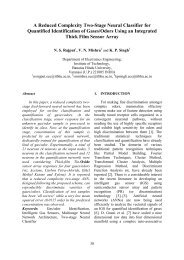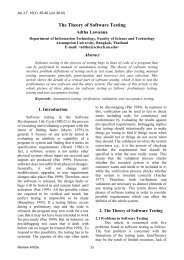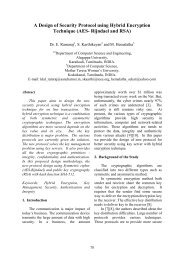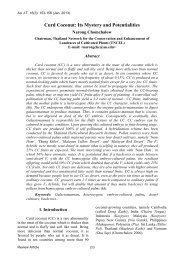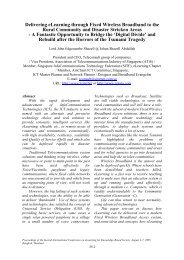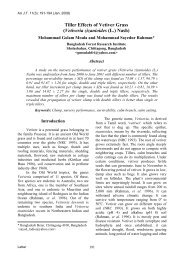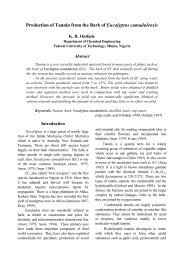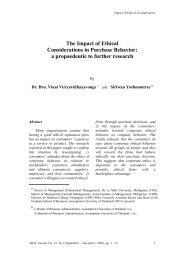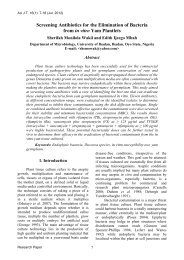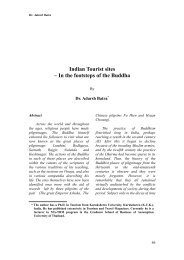Impact of Service Quality, Trust, and Customer ... - AU Journal
Impact of Service Quality, Trust, and Customer ... - AU Journal
Impact of Service Quality, Trust, and Customer ... - AU Journal
Create successful ePaper yourself
Turn your PDF publications into a flip-book with our unique Google optimized e-Paper software.
The most common interpretations obtained<br />
from various authors reflect the notion<br />
that satisfaction is a feeling which results<br />
from a process <strong>of</strong> evaluating what has<br />
been received against what was expected,<br />
including the purchase decision itself <strong>and</strong> the<br />
needs <strong>and</strong> wants associated with the purchase<br />
(Armstrong & Kotler, 1996). Bitner<br />
& Zeithaml (2003) stated that satisfaction<br />
is the customers’ evaluation <strong>of</strong> a product or<br />
service in terms <strong>of</strong> whether that product or<br />
service has met their needs <strong>and</strong> expectations.<br />
According to Boselie, Hesselink, <strong>and</strong><br />
Wiele (2002) satisfaction is a positive, affective<br />
state resulting from the appraisal <strong>of</strong><br />
all aspects <strong>of</strong> a party’s working relationship<br />
with another. The definition provided by<br />
Boselie et al. (2002) has been used for this<br />
study.<br />
<strong>Customer</strong> Loyalty<br />
Can <strong>Service</strong> <strong>Quality</strong>, <strong>Trust</strong>, <strong>and</strong> <strong>Customer</strong> Satisfaction Engender <strong>Customer</strong>s Loyalty?<br />
As identified by the researchers that<br />
customer loyalty as a construct is comprised<br />
<strong>of</strong> both customers’ attitudes <strong>and</strong> behaviors.<br />
<strong>Customer</strong>s’ attitudinal component represents<br />
notions like: repurchase intention or<br />
purchasing additional products or services<br />
from the same company, willingness <strong>of</strong> recommending<br />
the company to others, demonstration<br />
<strong>of</strong> such commitment to the company<br />
by exhibiting a resistance to switching<br />
to another competitor (Cronin & Taylor,<br />
1992; Naray<strong>and</strong>as, 1996; Prus & Br<strong>and</strong>t,<br />
1995), <strong>and</strong> willingness to pay a price premium<br />
(Zeithaml, Berry, & Parasuraman,<br />
1996). On the other h<strong>and</strong>, the behavioral<br />
aspect <strong>of</strong> customer loyalty represents- actual<br />
repeat purchase <strong>of</strong> products or services<br />
that includes purchasing more <strong>and</strong> different<br />
products or services from the same com-<br />
pany, recommending the company to others,<br />
<strong>and</strong> reflecting a long-term choice probability<br />
for the br<strong>and</strong> (Feick, Lee, & Lee,<br />
2001). It can be concluded that customer<br />
loyalty expresses an intended behavior related<br />
to the product or service or to the<br />
company. Pearson (1996) has defined customer<br />
loyalty as the mind set <strong>of</strong> the customers<br />
who hold favorable attitudes toward a<br />
company, commit to repurchase the<br />
company’s product/service, <strong>and</strong> recommend<br />
the product/service to others. The<br />
researchers have used the definition <strong>of</strong><br />
Pearson (1996) for this study.<br />
Relationship between <strong>Service</strong> quality<br />
<strong>and</strong> <strong>Customer</strong> Satisfaction<br />
Over the past few years there has been<br />
a heightened emphasis on service quality<br />
<strong>and</strong> customer satisfaction in business <strong>and</strong><br />
academia alike. Sureshch<strong>and</strong>ar et al, (2003)<br />
identified that strong relationships exist between<br />
service quality <strong>and</strong> customer satisfaction<br />
while emphasizing that these two are<br />
conceptually distinct constructs from the<br />
customers’ point <strong>of</strong> view.<br />
Spreng <strong>and</strong> Mackoy (1996) also<br />
showed that service quality leads to customer<br />
satisfaction while working on the<br />
model developed by Oliver (1997). In a<br />
recent study conducted by Ribbink et.al<br />
(2004) revealed that this relationship also<br />
exists in the e-commerce industry. Consistent<br />
with these findings, the researchers<br />
have hypothesized the following:<br />
Hypothesis 1: <strong>Customer</strong>s’ perceived<br />
service quality has a positive effect on<br />
customer satisfaction.<br />
27


